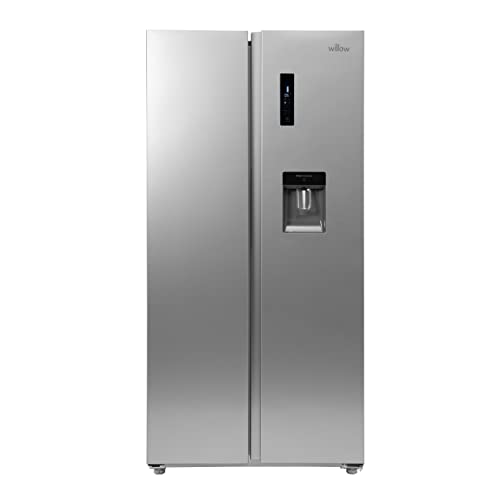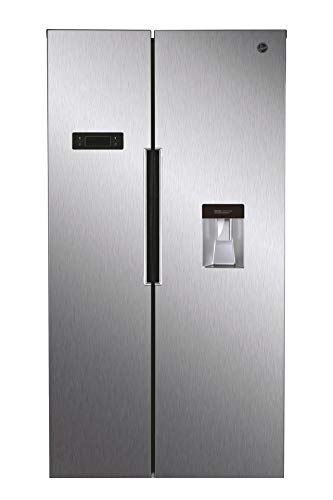
Fridge And Freezer
FollowOverview
-
Founded Date September 19, 1974
-
Sectors Accounting / Finance
-
Posted Jobs 0
-
Viewed 121
Company Description
A Look At The Future What’s In The Pipeline? Fridges Industry Look Like In 10 Years?
The Ultimate Guide to Buying a Fridge: Making Smart Choices for Your Kitchen
When it comes to important kitchen home appliances, couple of products are as essential as a refrigerator. It is the heart of the kitchen– keeping your food fresh and your components at ideal temperature levels. Nevertheless, choosing the ideal fridge can be a daunting task, provided the range of styles, sizes, and innovations available on the marketplace. This guide will offer valuable insights into the aspects to consider when purchasing a fridge, common types, and often asked questions to assist you make a notified choice.
Secret Factors to Consider When Buying a Fridge
To streamline your decision-making process, here are the core factors one should think about when wanting to buy a fridge:
1. Size
- Kitchen Space: Measure the area in your cooking area where the fridge will be positioned. This consists of checking entrances to make sure the fridge can be delivered without concern.
- Capacity: Consider how much food you normally store. A larger home may require a fridge with a capability of 20-26 cubic feet, while smaller families may discover 10-18 cubic feet sufficient.
2. Design
- Top Freezer Refrigerators: A standard choice that features a freezer on top. They are normally more economical and energy-efficient.
- Bottom Freezer Refrigerators: Offers benefit by putting the refrigerator area at eye level. Suitable for those who access fresh food more often.
- Side-by-Side Refrigerators: Provides easy access to both freezer and fresh food sections. Good for narrow kitchens.
- French Door Refrigerators: Combines the benefits of bottom freezers with side-by-side designs. They typically come with additional functions such as ice and water dispensers.
- Compact Refrigerators: Perfect for little spaces like dormitory or offices.
3. Energy Efficiency
- Search for energy-efficient models to save on electrical power costs. Inspect the Energy Star label, which suggests that the appliance fulfills or surpasses energy effectiveness requirements.
- Consider the typical yearly energy intake reported in kilowatt-hours (kWh).
4. Features
- Ice and Water Dispenser: Convenient for immediate access to ice and filtered water.
- Smart Technology: Some fridges come geared up with Wi-Fi connection that permits you to keep an eye on and adjust settings from your smart device.
- Adjustable Shelves and Bins: For customizable storage to accommodate high products.
- Temperature Level Control Zones: Frydge Different locations may have different environment controls for optimal storage of various foods.
5. Price
- Set a spending plan. Fridge rates can vary from a couple of hundred to numerous thousand dollars depending on style, size, and functions.
- Think about extra expenses such as extended guarantees, delivery, and setup.
Relative Table of Popular Fridge Styles
| Fridge Style | Average Price Range | Pros | Cons |
|---|---|---|---|
| Top Freezer | ₤ 400 – ₤ 1,200 | Cost effective, energy-efficient | Minimal functions |
| Bottom Freezer | ₤ 900 – ₤ 2,500 | Easy access to fresh food | Can be pricey |
| Side-by-Side | ₤ 600 – ₤ 3,000 | Excellent organization, easy access | Freezer space can be restricted |
| French Door | ₤ 1,200 – ₤ 4,000 | Spacious, stylish, often feature-rich | Greater price point |
| Compact | ₤ 150 – ₤ 600 | Space-saving, portable | Restricted storage capability |
Often Asked Questions (FAQs)
1. The length of time do refrigerators typically last?
Normally, a well-kept refrigerator can last around 10 to 20 years. Routine upkeep, such as cleaning up the coils and examining door seals, can lengthen its lifespan.
2. How can I preserve my fridge effectively?
- Keep the coils tidy to assist keep energy performance.
- Make sure that the door seals are tight to avoid cold air from getting away.
- Frequently thaw (if relevant) and clean the interior to avoid build-up of germs and smells.
3. Do I need to spend for delivery and setup?
A lot of merchants charge for delivery and installation, but this cost can in some cases be waived throughout promotions. Always validate the charges before completing your purchase.
4. What should I do if my fridge is not cooling properly?
Start by examining the temperature settings and guarantee the vents are clear of any obstructions. If the concern continues, it may be needed to consult a professional repair work service.
5. How can I figure out the size of the fridge I need?
As a general standard, permit about 4 to 6 cubic feet of area per person in your home. However, this can vary based on specific cooking and storage practices.
Buying a refrigerator might appear easy, but it requires cautious consideration of various factors. By examining your requirements and choices in terms of size, design, features, and energy efficiency, you’re better positioned to select a fridge that will serve your home well for several years to come. This guide aims to streamline the intricacies associated with fridge shopping, empowering you to make an informed choice that will improve your kitchen area experience. Whether you’re updating or purchasing your first system, a little research study can result in a refrigerator that perfectly fits your way of life and cooking habits.




